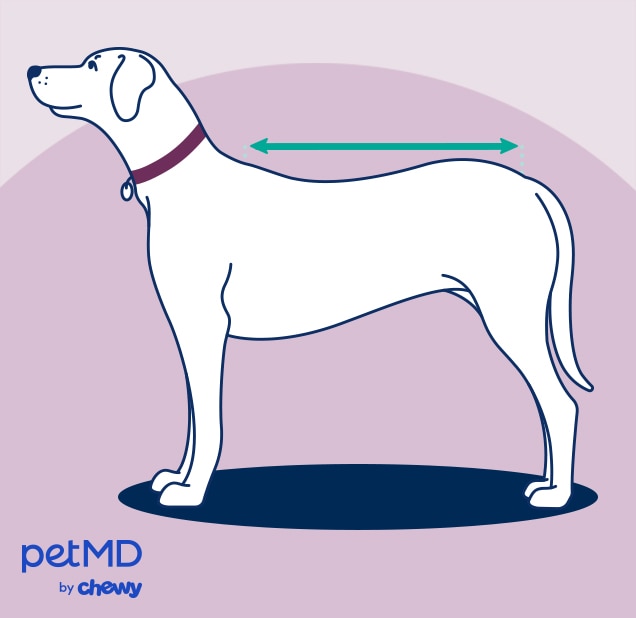How To Measure a Dog
It’s important to know how to measure your dog so you can fit your pup with the right harness, buy the comfiest crate for their size, or get the perfect cozy sweater for the cold winter months. While it might seem daunting at first, properly measuring your dog isn’t difficult if you follow these simple steps. Here’s how to do it.
How To Measure a Dog
Before measuring your dog, you’ll need:
-
A fabric measuring tape or piece of string
-
Your phone or something to write on to record measurements
-
Some dog treats to reward your pup for standing still
You may also want to ask another person for help, if possible. Once you’re ready to begin, you’ll need to gather measurements for your dog’s height, length, and their neck and chest girth.
Height

Measuring your dog’s height is particularly important when sizing them for a comfortable crate or harness.
To do this:
-
Get your dog to stand square against a wall
-
Take your tape measure and place one end on the floor near the dog’s front paw
-
Measure to the highest point where their shoulder blades and neck meet
Make sure your dog is standing straight up with their head facing forward, so they’re not bending their head down or to the side when you take the measurement.
Body Length

Measure your dog’s length by placing the tape measure at the base of their tail (where the tail meets the body, not the end of the tail) to the base of their neck. Measure along the spine on top of their back to get the most accurate reading.
Girth

A dog’s girth measurement is important to know before buying a well-fitting harness. To record your pup’s girth, you have to measure their chest and neck circumferences.
-
Measure your dog’s chest by wrapping the tape measure around the widest part of their rib cage.
-
Measure your dog’s neck girth by lightly wrapping the tape measure from the middle of your pup’s shoulder blades around to the top of the chest and back. This is the area where a collar typically sits.
To make sure the harness, collar, or clothing item you’re measuring for isn’t too tight, you should be able to fit a finger or two between the dog’s skin and the item. Try adding 1 or 2 inches to the measurement to ensure a snug but unrestricting fit.
Also, consider buying an adjustable collar or harness so you can make it tighter or looser as needed, especially if your dog is not yet fully grown.
Tips for Measuring a Dog
- Don’t force your dog to be measured: It’s important to note that you should never force your dog to do anything, so holding them down to get the right measurements isn’t a good idea. Instead, try getting your pup to sit nicely by asking a friend to pet and distract them while you measure. Or stick a lick mat to the wall with some peanut butter to get your dog to stand still while you take measurements.
- Try taking measurements after exercise: Choose a time of day when your dog is most likely to be calm, or do so after going for a walk or playing a long game of fetch.
- Use string as a substitute for measuring tape: If you don’t have a fabric tape measure on hand, you can instead use a long piece of string or yarn to capture the length of your dog, then measure that portion of string’s length with a carpenter’s tape measure or ruler.
- If your dog is between sizes, size up: You don’t want your dog’s clothing or accessory to be too tight, so it’s always better to choose a larger size if they’re right on the cusp of a sizing chart.
Featured Image: kali9/E+ via Getty Images
